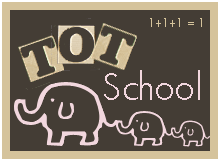Lily just came bouncing into the room: "Mom, I came to tell you!"
"What?"
"I figured out seven plus seven is fourteen!"
"That's right! Good figuring."
"Seven plus two is nine, seven plus three is ten, and so on..."
And she bounced back out to finish her lunch.
I love watching the spontaneous learning that happens when kids are left to their own devices to explore and ponder the world.
Wednesday, April 28, 2010
Thursday, April 8, 2010
Passionate Learning
This morning I was thinking about teachers and learners, and whether learning should ever feel like drudgery. I'm convinced that, while hard work is usually a part of the learning process, drudgery does not need to be. In fact, anytime a learning task becomes drudgery, very little true learning will take place.
So how do we learn--and how should be teach? I think the answer to both questions is the same: great teaching and true learning only occur where there is interest, even passionate interest, in a subject. The learning process is further catalyzed when the relationship between teacher and learner is one of real interest--the kind of interest in another person that can come only from real love for that person.
When a student is already passionate about a topic, the most that may be needed from a teacher or mentor is a little guidance along the way. Learning takes place because the student feels an appetite for knowledge and is ready to actively pursue learning. But what if the appetite is not there? That is where the role of a passionate teacher or mentor becomes critical. I remember a particular college professor who inspired a great appetite for learning in his students. His area of expertise was microbiology, and he was truly passionate about the subject. The minute he walked into the lecture hall students would sit up and lean forward in their chairs, energized by his energy and interested by his interest. His classes were some of the hardest I took in college, but they were also some of the best. By contrast, I remember signing up several semesters in a row for a calculus class. I would walk into class the first day, and there at the board would be a professor who seemed tired and bored; you felt that he had taught this class hundreds of times in the past and found nothing of interest in the subject. Every semester, I dropped that class after the first session--all I could see ahead was months of drudgery. In both the microbiology and the calculus classes, I arrived the first day with a moderate interest in the subject matter--in one case, that interest was fueled by the spark from a passionate teacher; in the other, it was virtually extinguished.
As teachers, we sometimes find ourselves faced with the problem of teaching something about which we are not passionate. What can we do? I don't think that trying to pretend a passion for a subject that we don't actually feel is effective--students will be able to discern that difference. I do think it is possible to ignite passion in ourselves. Every subject has fascinating aspects, but we may need to dig a little deeper or try a different approach before we find our own inspiration. If that fails, maybe we can find someone to teach who is passionate about the subject--or we can let that subject drop for a time a go where our own and our students' interests lead us. Ultimately, such an approach will result in much greater and deeper learning that hundreds of hours of slogging through something that feels like drudgery.
So how do we learn--and how should be teach? I think the answer to both questions is the same: great teaching and true learning only occur where there is interest, even passionate interest, in a subject. The learning process is further catalyzed when the relationship between teacher and learner is one of real interest--the kind of interest in another person that can come only from real love for that person.
When a student is already passionate about a topic, the most that may be needed from a teacher or mentor is a little guidance along the way. Learning takes place because the student feels an appetite for knowledge and is ready to actively pursue learning. But what if the appetite is not there? That is where the role of a passionate teacher or mentor becomes critical. I remember a particular college professor who inspired a great appetite for learning in his students. His area of expertise was microbiology, and he was truly passionate about the subject. The minute he walked into the lecture hall students would sit up and lean forward in their chairs, energized by his energy and interested by his interest. His classes were some of the hardest I took in college, but they were also some of the best. By contrast, I remember signing up several semesters in a row for a calculus class. I would walk into class the first day, and there at the board would be a professor who seemed tired and bored; you felt that he had taught this class hundreds of times in the past and found nothing of interest in the subject. Every semester, I dropped that class after the first session--all I could see ahead was months of drudgery. In both the microbiology and the calculus classes, I arrived the first day with a moderate interest in the subject matter--in one case, that interest was fueled by the spark from a passionate teacher; in the other, it was virtually extinguished.
As teachers, we sometimes find ourselves faced with the problem of teaching something about which we are not passionate. What can we do? I don't think that trying to pretend a passion for a subject that we don't actually feel is effective--students will be able to discern that difference. I do think it is possible to ignite passion in ourselves. Every subject has fascinating aspects, but we may need to dig a little deeper or try a different approach before we find our own inspiration. If that fails, maybe we can find someone to teach who is passionate about the subject--or we can let that subject drop for a time a go where our own and our students' interests lead us. Ultimately, such an approach will result in much greater and deeper learning that hundreds of hours of slogging through something that feels like drudgery.
Home-Made Learning Games: King's Ransom

I was in a creative mood the other day and drew up this game to help Lily learn her addition facts for 9's; it could easily be modified for any math facts. If you read my post about visiting Durnstein Castle in Austria, you can guess where the inspiration came from--King Richard the Lion-Hearted of England was held captive there until the English found out where he was and eventually ransomed him. The goal of this game was to ransom the king held captive in the castle.
I wrote the addition problems for 9's around the edges of the board (ours happened to be shield-shaped, left over from another project, but any poster board would work well). I chose an amount for the ransom, in this case 50 cents (I had just picked up a roll of nickels at the bank and thought I would throw in some money practice by using those to collect the ransom). I made up cards with the numbers 9-18, and every player started with 5. The game is played by rolling a die and moving your playing piece to the appropriate problem square. If you have a number card with the answer to that question, you get to trade it in for a nickel and roll again. If you don't have the right answer card, you draw a card from the draw pile; if that card matches you can play it and go on, if not your turn ends. My children enjoyed the game but were getting anxious to move on to something else before anyone had acquired the requisite 10 nickels to ransom the king, so Lily and Luke pooled their funds and freed the king that way. I think next time we play I might spice things up a bit by throwing in random squares requiring the player who lands on them to do something other than answering a math problem--say, twenty jumping jacks (anything active is good!) in order to earn their coin. And maybe each square could earn a different coin--that way they would get more money practice! The ransom amount too could vary...
Subscribe to:
Posts (Atom)














